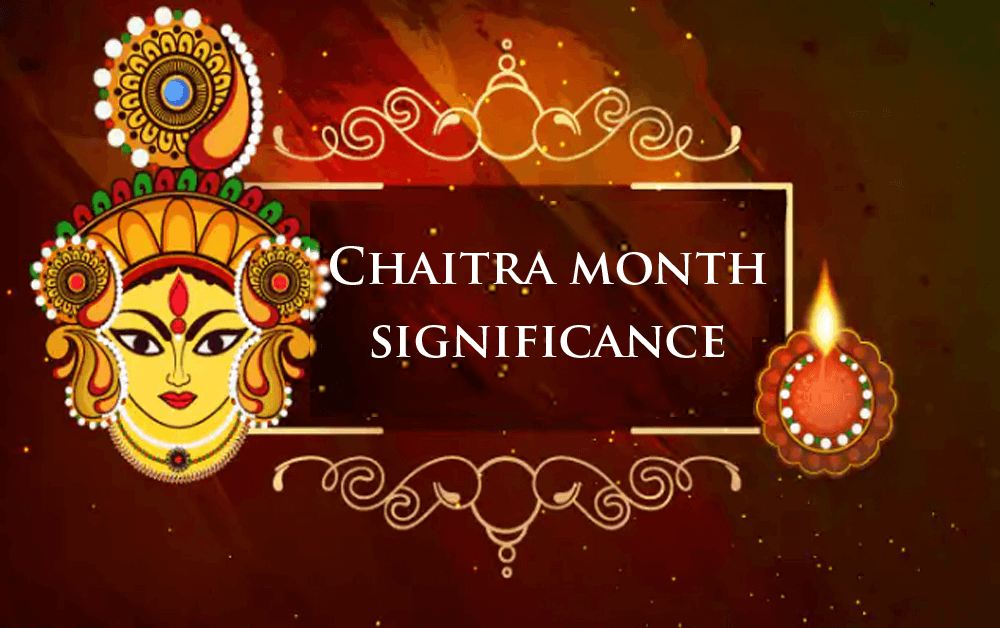According to the Lunar calendar, Chaitra is the first month, which marks the beginning of the spring season and witnesses the beauty and vibrancy of nature. It is also the harvest time when crops ripen, and farmers reap the rewards for their hard work. Chaitra is an auspicious month for festivals and religious observances.
Auspiciousness of Chaitra Month
Chaitra month was very encouraging when Brahma started creating the Universe. According to the Brahma Purana, creation took place on the Pratipada (First Day) of the Shukla Paksha (Bright Fortnight) of Chaitra month, and hence, it is celebrated as the Vedic New Year.
It is an ideal time to learn the sacred Vedas and Upanaya Sanskar, a holy Vedic ritual. The month is very sacred as God incarnated in many forms.
Power of Sun Transit: Vedic New Year, Vishu & Mesha Sankranti
Chaitra falls in March-April, when the Sun transits the first zodiac sign, Aries (Mesha Rashi), and is exalted, reflecting new beginnings and vitality. The day is celebrated as Mesha Sankranti and Vishu in parts of South India. In the north, it coincides with Baisakhi, a harvest festival in the north.
We celebrate the Vedic New Year (Tamil Puthandu) on April 14 and offer worship to the exalted Sun, the Soul Planet, and the King of Planets, which signifies power, strength, ambition and positivity. It is a time for new beginnings, growth and rejuvenation.
The Sun is a life-giving force that sustains all life forms on Earth. Its Supreme powers can bring wisdom, intelligence, success, good fortune and prosperity.
Festival Observances: Worship & Celebration of Gods & Goddesses
Sri Ram Navami- Vishnu, the Supreme Protector and Sustainer of the Universe manifested as Sri Ram, the Maryada Purushottam (Supreme Man). He was born on the 9th day of the Shukla Paksha (Bright Fortnight), celebrated as Sri Rama Navami. He is the seventh incarnation born to destroy Ravana, the evil Lanka king.
Matsya Jayanti-The Chaitra month is also known for Vishnu's incarnation in the Matsya avatar, the first of the Dasa Avatar where he restored the lost Vedas, and the day is celebrated as Matsya Jayanti.
Hanuman Jayanti- Hanuman was born on Chaitra Poornima (Full Moon Day) and is celebrated as Hanuman Jayanti. Hanuman is the perfect example of Shakti and Bhakti. He was a devout follower of Sri Ram and the most exemplary student of Surya Deva (Sun God).
Offering worship to Hanuman during this auspicious month can help you receive his protection against all negativity and have the intelligence to make the right decisions.
Chitra Poornima- The Chaitra month also celebrates Chitra Poornima as the Moon shines its brightest in Chitra Nakshatra in the Libra constellation. It is the First Full Moon of the Vedic New Year. It is a time to erase karmic records that keep you back from rejuvenation and wish-fulfilment.
Vasant Navratri/Chaitra Navaratri- is celebrated during the Chaitra month for nine days in worship of warrior Goddess Durga in her nine Divine forms. It involves chanting sacred texts like the Devi Bhagavatam and Sundarakandam in the Ramayan. Chaitra Navaratri marks the end of winter and the beginning of the short spring season before summer commences.
Ugadi- During the Chaitra month, we also witnessed the observance of Ugadi on the first day of the Waxing phase of the Moon across the Telugu and Kannada communities. The day is also known as Chitra Shukla Paksha Padyami.
Ugadi or Yugadi is derived from the Sanskrit root Yuga (Age) and Adi (Beginning). This festival is dedicated to Brahma the Creator and marks the beginning of the New Year in the Lunar calendar. It marks the first Day of the Universe and helps receive the blessing of Brahma Deva.
Gudi Padwa- People celebrate Gudi Padwa across Maharashtra as the New Year dedicated to Brahma and his consort, Goddess Saraswati. It marks the reaping of the Rabi harvest and falls on the first day of the Chaitra month.
It is also known as Samvatsar Padvo and celebrated by Maharashtrians on the Chaitra Shukla Pratipada day, the first day of Chaitra Navaratri also known as Ghatasthapana or Kalash Sthapana, when people offer worship to Goddess Adi Shakti and her Divine feminine energy with the Kalash Sthapana.
In Gudi Padwa, Gudi implies the flag of Brahma Deva, and Padwa signifies the first day of the Moon. According to traditional belief, Brahma created time and the Cosmos on this day, which is also associated with Sri Ram's coronation as King of Ayodhya. The festival brings immense peace and stability to life.
Yamuna Chhath- The river Yamuna descended on Earth during the auspicious month of Chaitra, during the six phases of the Waxing Moon. This event is celebrated as Yamuna Chhath, an important festival dedicated to Goddess Yamuna, the consort of Sri Krishna, and believed to be one of the most holy rivers. It is celebrated on Shukla Paksha Shashti and helps receive Goddess Yamuna's and Sri Krishna's blessings.
Kamada Ekadashi- is dedicated to Vishnu on the 11th lunar day of the Shukla Paksha in the Chaitra month. This is the first Ekadashi celebrated after the onset of the Lunar calendar. Worshipping Vishnu frees from all sins and gives Moksha (Liberation).
Chaitra month is a time for spiritual reflection and improving oneself. It is ideal for performing charitable deeds and receiving the blessings of elders. Chaitra is a month to celebrate new beginnings, engage in spiritual activities, and seek happiness and positivity. It symbolizes the renewal of nature and the Universe, is celebrated with traditional rituals, and holds spiritual significance.





.png)
0 Comments